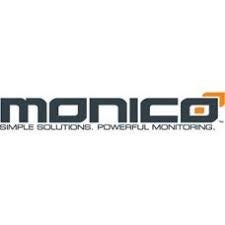
In recent years, advances in communications, sensors, control systems, data management software and analysis techniques have made it practical to remotely assess machine health and measure operational performance in real time. Operators who have embarked on implementing a remote monitoring solution have discovered that a variety of technologies provided from multiple suppliers exists.
Deciding on which technologies to incorporate into their solution can be a daunting task when considering the technologies capabilities, costs and how they can be integrated into the solution. Without due considerations, it is quite possible to implement a solution that does not meet the desired return on investment from both cost and value received points of view.
While it may be obvious, one thing that can be overlooked when choosing a given technology is that the technology must be able to deliver value at a cost that is commensurate with the value derived. This value can come from increased operational efficiency via improved operational insight, increased machine availability, increased mean time between outages (MTBO) and other operational costs.
What this implies is that those tasked to develop a solution must first define the functional requirements that identify the expected value. This becomes the foundation from which the acquisition of supporting technologies is decided. The architects of the solution must resist the urge to hastily procure various technologies to produce data and to analyse it without considering the deliverables of the solution. This approach is not much different than that taken when building an offshore drilling rig – functional requirements drive the materials and tools from which the rig is constructed.
Monitoring equipment health
From this point on, the primary focus for considerations will be related to monitoring equipment health for the purpose of taking corrective action on a proactive basis before unscheduled outages occur. Nevertheless, some of the aspects are applicable to remote monitoring for other purposes, such as gaining operational performance.
There are three major aspects to consider during the development phase:
- Dataset
- Analytics
- Value – corrective actions driven by failure modes
The value of a solution is derived from being able to identify developing failure modes that can cause an unscheduled outage or more expensive repair if allowed to go to failure. Further, the identification should be early enough so that a greater length of time is available for planning corrective action. The early corrective action must be assigned a value that can be tracked to assess the solution’s value.
The identified failure modes and their respective values for proactive correction then become the functional requirements for the solution. A key point to recognise is that the corrective action has to be more than identifying a data anomaly – it must provide a technician with information that allows him to know which parts and tools are required.
With the functional requirements of the failure modes that need to be captured by the solution, a dataset can be identified. The dataset will contain data elements that are needed to determine the health of the machine’s various components. Identifying the dataset along with knowledge of the machine’s existing sensors will determine if additional sensors are required. In addition to identifying the elements of the dataset, the fidelity of the data needs to be defined.
Identifying the required dataset and failure modes will then drive the selection of the appropriate analysis tools (analytics) that are needed. In a construction analogy, the failure modes are the structure, the dataset is the material, and the analyses are the tools to work the material. A house with brick exterior requires brick and mortar instead of lumber and nails, and trowels instead hammers and saws. This approach can help prevent the selection of an analytics du jour that may end up being an overkill (not cost effective) or even ineffective for the task at hand.
Scalable solutions
The development of a solution must also consider scalability – particularly in terms of human effort required to operate it. Creating recommended corrective actions automatically instead using equipment subject matter experts improves scalability and reduces cost. This means the analysis techniques need to do more than identify data anomalies – they must link the anomalies to failure modes that will drive parts and tools requirements.
One overall decision point to make when implementing a condition monitoring solution is determining whether to build it or buy it. Factors to consider in this decision include
- The delay in returned value while solution is being developed in house.
- Building a solution is capital intensive. Where is the best ROI of human and financial capital?
- Do core competencies exist in the organization to build a solution.
Further details:
For more information, please visit https://www.monicoinc.com/.


